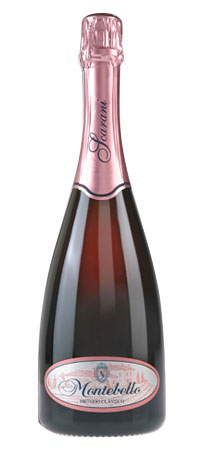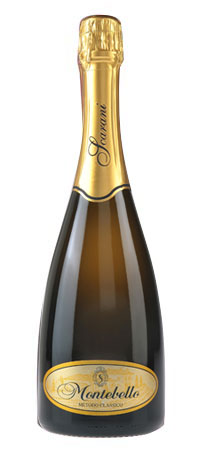|
|
Barbera Still Red
TIPOLOGY Oltrepo Pavese doc
GRAPE VARIETIES barbera rare grapes
IN THE GLASS still red
Vinification
After carefully inspecting the stage of ripening, harvesting takes place towards the end
of September, and the grapes after being destemmed and crushed, under go maceration for ten to twelve days depending on the characteristics of the vintage, in stainless steel tanks, with frequent pumping over. Firstly with a malolactic fermentation, immediately following with the alcoholic fermentation in French and Austrian barrels, of which 1/3
new 2/3 secondpassage, for about 12 months.
Organoleptic Features
Brilliant ruby red with violet reflections, intense, harmonious with hints of prunes,
leather and spices. On the palate full and well structured.
Food Suggestions
Savoury starters, roast, braised and boiled meats.
Barbera Wine Card
|
|
|
Barbera Lively Red
TIPOLOGY Oltrepo Pavese doc
GRAPE VARIETIES barbera rare grapes
IN THE GLASS lively red
Vinification
Harvesting takes place towards the end of September, and the grapes afterbeing
destemmed and crushed, under go maceration for eight to ten days depending on the
characteristics of the vintage, in stainless steel tanks, with frequent pumping over.
At the end of the malolactic fermentation the wineages in stainless steel tanks for about 4/5 months. Before bottling the spume develops in pressurized tanks to obtain a natural refermentation.
Organoleptic Features
Ruby red. To the nose, the initial vinous perceptions leave space for an intense bouquet with hints of black currants and marasca cherries.
Warm in the mouth smooth with acidy hints which mingle with its full body.
Food Suggestions
Well accompanies meat filled ravioli; hot salami such as typical Italian cotechino
or zampone, all roasted meats, mature and semi mature cheeses.
Barbera Wine Card
|
|
|
Bonarda
TIPOLOGY Oltrepo Pavese doc
GRAPE VARIETIES croatina rare grapes
IN THE GLASS lively red
Vinification
The Oltrepo has a historical vocation for the production of red wines, Croatina,
in fact, is the most ancient grape grown in the area; the first historical accounts date
back to 1200. Croatina grapes are harvested by hand depending on the maturation
stage, de-stemmed and pressed; it then undergoes maceration that lasts between eight to ten days depending on the characteristics of the vintage, in stainless steel tanks, with frequent pumping over. At the end of the malolactic fermentation the wine ages in stainless steel tanks for about 4/5 months. Before bottling the spume develops
in pressurized tanks to obtain a natural refermentation.
Organoleptic Features
A ruby red of with violet reflections, Intense and vinous with hints of cherries
and wood land fruits. It is a smooth elegant wine. To be drank young.
Food Suggestions
Excellent throughout any meal.
Bonarda Wine Card
|
|
|
Buttafuoco
TIPOLOGY Oltrepo Pavese doc
GRAPE VARIETIES barbera croatina rare grapes
IN THE GLASS still red
Vinification
Harvesting takes place towards the last 10 days of September, and the grapes after
being de-stemmed and crushed, under go maceration for eight to ten days depending
on the characteristics of the vintage, in stainless steel tanks, with frequent pumping
over. At the end of the malolactic fermentation the wine is aged for 70% in stainless
steel tanks and 30% in barriques for about 7/8 months; when blended it is aged
for a further 2 months in bottles.
Organoleptic Features
An impenetrable ruby red; the nose the wine shows a splendid intensity with spicy
notes together with black cherry and plum jams.
To the palate full bodied and well structured.
Food Suggestions
Meat filled ravioli, hot salami and cured pork dishes, also with game such a share
and wild boar and well seasoned cheeses.
Buttafuoco Wine Card
|
|
|
Sangue Di Giuda
TIPOLOGY Oltrepo Pavese doc
GRAPE VARIETIES croatina barbera rare grapes
IN THE GLASS sweet lively red
Vinification
After a carefully controlling the state of maturation, harvesting takes place in the 2nd
week of September, after being de-stemmed and crushed they undergo a controlled
temperature maceration to maintain a high sugar content. Then follows the draining
of 60% of the free drawn wine, the must is then cooled and put into pressurized tanks.
The fermentation is thermostatically controlled; once the wines start to spume it is put
into bottles.
Organoleptic Features
A sweet wine of a bright ruby red with purplish reflections. Full bodied and vinous with
notes of violets together with raspberry and blueberry jams, smooth and fragrant.
Food Suggestions
All desserts, biscuits, jams, strawberries, peaches, fruit salads spicy cheeses
and roast chestnuts.
Sangue Di Giuda Wine Card
|
|
|
Custio
TIPOLOGY Oltrepo Pavese doc
GRAPE VARIETIES barbera croatina rare grapes
IN THE GLASS still red
Vinification
This wine is one of the oldest still in the company's production and is found on the
summit of the "CUSTIO" hill. After being de-stemmed and crushed, they undergo
maceration for eight to ten days depending on the characteristics of the vintage,
in stainless steel tanks, with frequent pumping over. At the end of the malolactic
fermentation the wine is aged for 50% in stainless steel tanks and 50% in barriques.
For about 10 months; when blended it is rested for a further 2 months in bottles.
Organoleptic Features
A deep ruby red. An aroma of intense spicy notes, black cherries and plums, an austere wine of great structure and persistence.
Food Suggestions
Red meat dishes such as thinly slice drump steak (tagliata), tasty fillet steaks
or delicious T bone steaks. Well seasoned cheeses and game.
Custio Wine Card
|
|
|
Pinot Nero
TIPOLOGY Provincia di Pavia IGT
GRAPE VARIETIES pinot nero
IN THE GLASS still red
Vinification
It one of the worlds greatest red grapes, that has found a perfect residence in the
favourable lands of the Oltrepo. After a carefully controlling the state of the maturation
harvest takes placeduring the 2nd week of September. After being de-stemmed and
crushed, the grapes undergo maceration for eight to ten days depending on the
characteristics of the vintage, in stainless steel tanks. At the end of the malolactic
fermentation the wine is aged in stainless steel tanks for about 6/7 months and
a further 2 months in bottles.
Organoleptic Features
Ruby red, it distinguishes itself with notes of black currants and marasca cherries a wine of great "class".
Food Suggestions
Perfect throughout any meal, but particularly suitable for all kinds of roasts, hot salami, grilled meats and also with medium matured cheeses.
Pinot Nero Wine Card
|

















